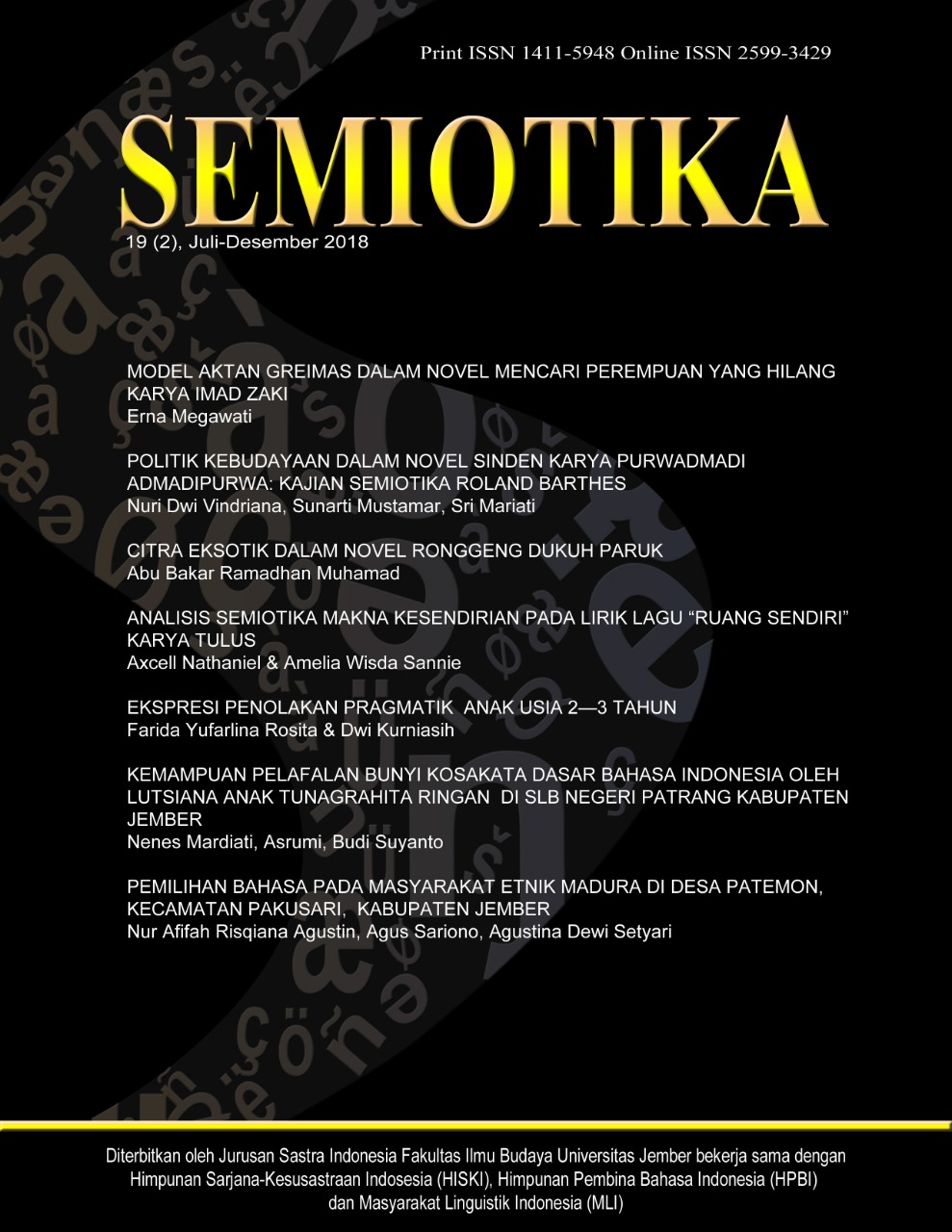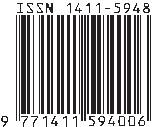KEMAMPUAN PELAFALAN BUNYI KOSAKATA DASAR BAHASA INDONESIA OLEH LUTSIANA ANAK TUNAGRAHITA RINGAN DI SLB NEGERI PATRANG KABUPATEN JEMBER
Abstract
The study aims to describe the forms of basic vocabulary sound pronunciation and the factors that influence the side of mild mental retardation children are not able to pronounce the sounds of the language. Data in the form of pronunciation of speech sounds on the basic vocabulary of Indonesian language sourced from Sisi with mild mental retardation children were collected by observation method with fishing, recording, and recording techniques. The data in the form of information about the factors behind them are from parents and the teacher is collected by using in-depth interviewing with recording and recording techniques. The data that has been classified is analyzed by phonetic articulatory matching method and qualitative descriptive method. The results show that the pronunciation of Sisi in pronouncing vowels and diphthongs can be said to be influenced by the Javanese language, because Sisi's parents are Javanese. On the pronunciation of the consonant sound, Sisi experiences an inability to recite. The inability of the Side to pronounce consonant sounds is influenced by health factors. The sides experience language brain damage which results in a communication process disturbance, coupled with the Sisi speech tool condition which is a slightly larger and thicker tongue which has an impact on the production of the language sounds produced and results in phonetic disturbances.
SEMIOTIKA has CC-BY-SA or an equivalent license as the optimal license for the publication, distribution, use, and reuse of scholarly work. Authors who publish with this journal retain copyright and grant the journal right of first publication with the work simultaneously licensed under a Creative Commons Attribution-ShareAlike 4.0 International License that allows others to share the work with an acknowledgment of the work's authorship and initial publication in this journal.
Attribution-ShareAlike
CC BY-SA










